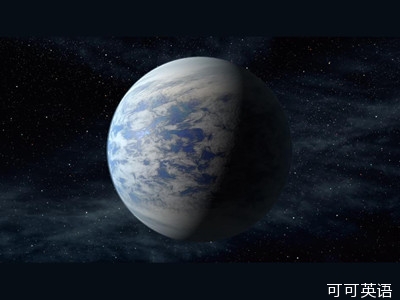The search for habitable, Earth-like planets keeps turning up promising candidates. And although astronomers have yet to find an Earth twin, some newly discovered worlds are pretty interesting in their own right.
人类在寻找像地球一样适合居住的星球,期间不断出现有希望的候选人。尽管宇航员们还没有发现与地球一模一样的星球,但那些新发现的世界却在引发他们的关注。

NASA's Kepler space telescope recently spotted seven new exoplanets, three of them in or near their stars' so-called habitable zones. That's the temperate region where a planet could accommodate liquid water. But all three worlds are bigger than Earth, and their composition is uncertain. They could be rocky like Earth or water worlds without landmasses. The discoveries are in the journal Science and in the Astrophysical Journal.
近来,美航局的开普勒太空望远镜发现了7颗新的系外行星,其中有三个位于或靠近所谓的“适居带”。适居带属于温带地区,那里可以容纳液态水。但这三个星球比地球体积要大,组成成分也未知。它们可能跟地球一样多岩石,也可能是没有陆地的水世界。这项发现刊登在《科学》杂志和《天体物理学杂志》上。
The planet Kepler 69c follows a Venus-like orbit around a sunlike star. Kepler 69c could be habitable, or it could be a bit too hot, depending on how much starlight the planet absorbs.
开普勒69c围绕一颗类太阳恒星运转,其轨道类似于金星围绕太阳公转的轨道。开普勒69c可能适于生存,也许它的温度偏高,但这要取决于它接收多少光照。
Kepler 62e and 62f are smaller, and orbit a star smaller than the sun. One planet receives about 60 percent less radiation than warms Earth, and the other gets about 20 percent more. It's possible that those attributes render Kepler 62e or 62f habitable, but astronomers don't yet know whether they are too cold, too hot or just right.
开普勒62e和开普勒62f体积较小,它们围绕着一颗比太阳小的恒星公转。其中一颗行星比地球接收的热辐射要少60%,另一个则多20%。这样的条件可能会阻碍开普勒62e和开普勒62f成为适于居住的星球,然而宇航员目前还不确定它们的温度是太低、太高还是正合适。













